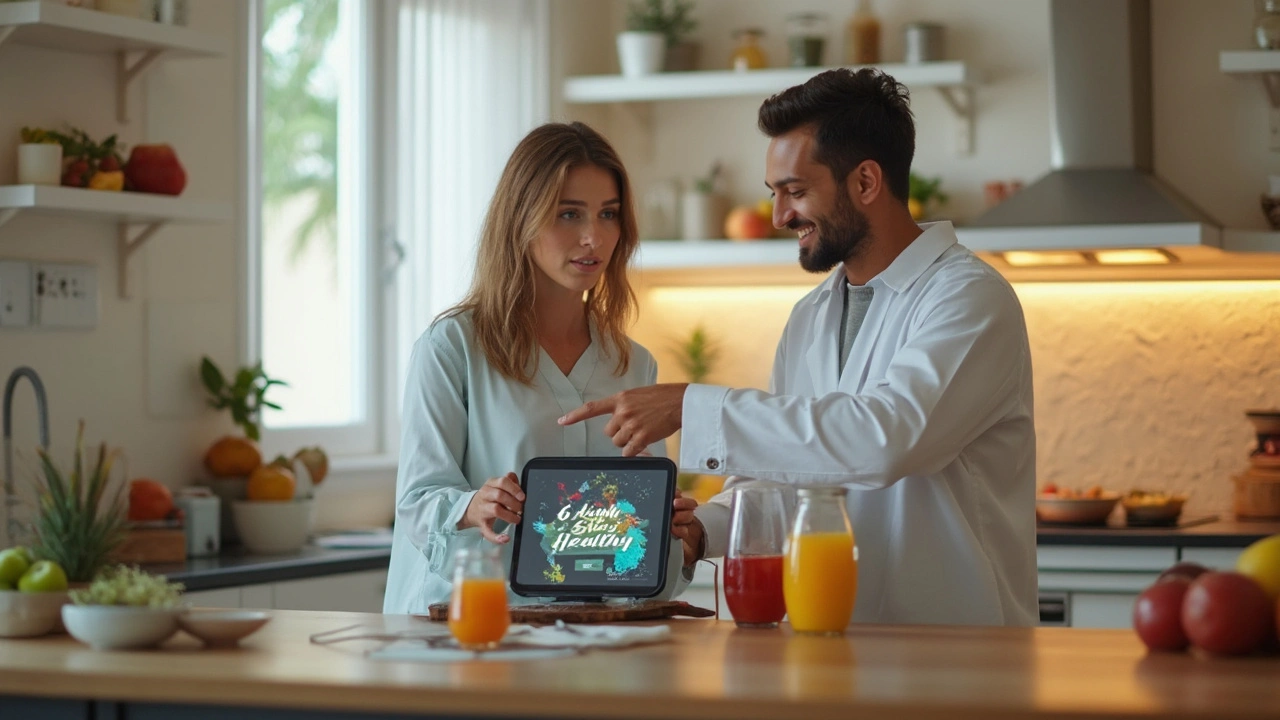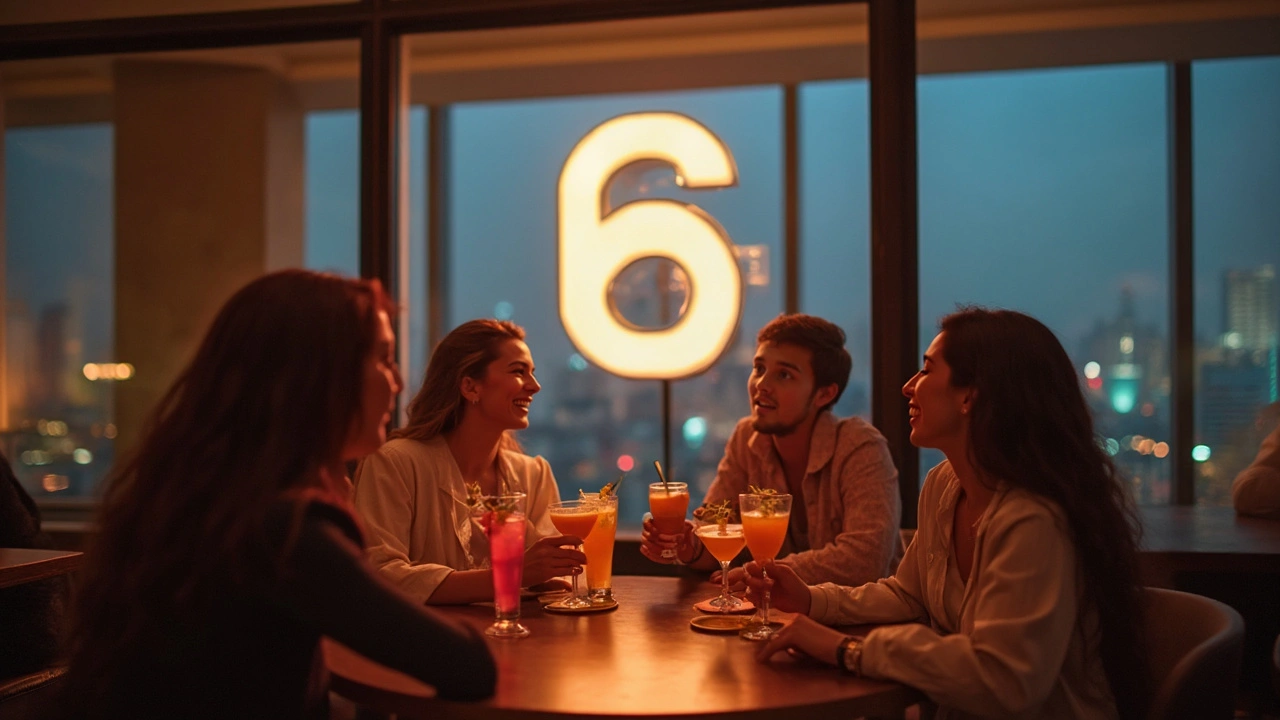Ever noticed how some folks just seem to know exactly when they’ve hit their limit during a night out, while others end up regretting even remembering their own name? There’s a reason behind this invisible line in social drinking, and it isn’t just about your friend’s legendary “sixth sense.” Enter the 6 drink rule—a cheekily memorable phrase that packs a lot more science and caution than you might expect. This isn’t a made-up number drifted over from college legends; it’s in health guidelines in countries like Australia, Canada, and the UK. But is it magic, myth, or medicine?
Understanding the Origins of the 6 Drink Rule
The "6 drink rule" isn’t just a rumor whispered through university halls. It traces back to studies and official recommendations that aim to draw the line between social fun and risky business. For example, in Australia, national health guidelines suggest that consuming more than six standard drinks (about 10 grams/0.35 ounces of pure alcohol each) in one sitting puts you at a higher risk for alcohol-related injury or harm. It’s not arbitrary—researchers dug into emergency room stats, injury rates, and social harm data to narrow in on this number.
One landmark study published in "Alcohol and Alcoholism" in 2015 evaluated injury rates after drinking bouts and found a steep jump after six standard drinks. The same findings showed up in road traffic accidents, violence, and hospitalization figures. Still, you won’t find a global consensus: for instance, in the United States, binge drinking definitions use the (very similar) threshold of five drinks for men and four for women in about two hours. The point is, after about six, risk ramps up sharply for practically everyone, regardless of gender, size, or party trick skills.
The term 'standard drink' becomes crucial here—because one glass of wine, one pint, and one shot are not made equal. A standard drink roughly equals 12 ounces of regular beer at 5% alcohol, 5 ounces of wine at 12% alcohol, or 1.5 ounces of distilled spirits at 40%. So, counting “six drinks” means six of these—not six fishbowl margaritas.
Ever thought, "But I’m bigger/smaller/tougher than everyone else"? Sure, body weight, metabolism, and even what you ate for dinner do play a role in how fast you absorb and handle booze. But statistically, the odds of injuries, fights, blackouts, and regrettable texts start to climb when you cruise past that sixth drink.
Why Is 6 Drinks the Suggested Cutoff?
Skeptical about why six and not, say, eight drinks? There’s a reason. That sixth drink is where sharp spikes in bad outcomes start to show up. If you don’t believe warnings, just peek at some hospital records from Friday nights. After six, people are way more likely to fall, get into fights, make risky decisions, drive drunk, or end up with alcohol poisoning.
Look at this table based on data from the Centers for Disease Control and Prevention (CDC), 2019:
| Number of Drinks | ER Visits (%) |
|---|---|
| 1-2 | 2% |
| 3-4 | 8% |
| 5-6 | 19% |
| 7+ | 40% |
Researchers have also found that after six drinks, the blood alcohol concentration (BAC) of the average adult usually lands above 0.08%, which is the legal driving limit in most places. At this level, balance, reaction time, and judgment start to slip. That’s not just about driving—everything from walking down stairs to crossing a street becomes trickier. That sixth drink is the tipping point for most people, even when you factor in those folks who “never get drunk.”
It’s important to remember the official “cutoffs” aren’t about being a party pooper; they’re rooted in decades of facts and some hard numbers. One Australian government survey found that people drinking more than six standard drinks in one go were six times more likely to end up in the ER than people who stopped at two. Even if you feel fine, your grey matter might disagree—not to mention your future self (and your next morning’s headache).

The Difference Between Guidelines and Personal Tolerance
Alright, so what if your best friend handles six drinks easily while you’re already texting your ex halfway through your third? The 6 drink rule is meant as a general marker—like speed limits or sunscreen advice. Bodies interact with alcohol weirdly. Genetics, medications, mental state, eating habits, and even hormone cycles—especially for women—can change how booze affects you on any given day.
Plenty of people think they know their own limit—until they don’t. Research by the National Institute on Alcohol Abuse and Alcoholism found that people consistently underestimate their blood alcohol concentration (BAC) after a few drinks. That means you might feel “fine,” but actually be soaring well past the point where your brain can keep up with your bravado. Social settings make it even trickier to judge—think loud music, peer pressure, and rounds that just keep coming. If you’re at a gathering, watch how often drinks are topped off without anyone really noticing. Suddenly, you’ve lost track. A 2008 UK survey found that people underestimated their consumption by about 20% when out with friends. Even those little sips and shots between rounds can quietly nudge you past six.
Worth remembering: “tolerance” doesn’t mean “no harm.” Heavy regular drinkers can *feel* less impaired but still face bigger health risks—heart, liver, cancers—plus the more boring consequences like losing your phone or embarrassing yourself on Instagram Live.
Smart Tips For Staying Beneath The 6 Drink Cutoff
Getting the best out of social drinking doesn’t mean locking up your wine glasses. It just takes some know-how (and maybe a bit of willpower). Here’s the trick: treat the 6 drink rule not as a dare but as your safety net. Most people enjoy a night out with way fewer than that anyway. Here are some genuinely practical tips to keep things fun but not frantic:
- Count your drinks—but count them honestly, using standard drink sizes (read those labels!).
- Eat before you drink—and snack while you sip; food slows down alcohol absorption.
- Pace yourself—space each drink out over at least an hour or alternate with water or a nonalcoholic drink.
- Keep an eye on peer pressure—don’t let rounds or shots control your night.
- Download a drink tracking app—some, like ‘Drinkaware’, estimate your BAC live as you log each beverage.
- Plan your ride home before you start—no excuses for “just one more then I’ll drive.”
- Watch for sneaky refills—bartenders and friends can top off your glass before you notice.
- Set a personal drink cutoff before you arrive—and stick to it, even if everyone else is going harder.
Hydrating helps massively—not just for your head the next day, but to slow your drinking speed. Some research shows that chugging a glass of water between every alcoholic drink cuts overall intake by about a third. If you’re out for dinner, order your next drink with your meal, not before it arrives. Easy hack: plan an activity after the drinks (like bowling, movies, or dancing) that makes it awkward to carry a glass everywhere.

When Breaking The 6 Drink Rule Gets Risky
Your body might handle a boozy evening better than your best mate—or at least you think so. But science is pretty clear: once you steam past six standard drinks in one sitting, bad things can spiral quickly. Alcohol is a central nervous system depressant; get enough of it, and your brain tricks you into thinking you’re invincible. That’s when slips, brawls, drunk dialing, and actual danger show up.
Some stats to put the risks into perspective: In Australia, about 70,000 hospital admissions a year are linked to excessive drinking sessions, according to the Australian Bureau of Statistics (2023 figures). In the US, the CDC reported that binge drinking cost over $249 billion in 2020—most of that tagged to people who blew past six drinks at parties, barbecues, or games. Not the kind of memory you want to wake up with.
The risks aren’t just for you—alcohol-fueled mishaps can draw in drivers, bystanders, and even entire friend groups. Most alcohol-related assaults and falls happen after a person has had, you guessed it, six or more standard drinks. Medically, crossing that line heaps strain on your liver and heart, wipes out your body’s hydration, and increases the odds of blackouts. The weird thing? Most drinkers simply can’t remember parts (or all) of what happened after the sixth drink, according to a 2021 report from Drinkaware UK.
If you realize you’re racking up drinks quickly, switch to nonalcoholic cocktails or low-ABV versions. Carry mints or chew gum—seriously, it slows your sipping. And don’t make the classic mistake of “catching up” with friends halfway through the night. It’s a surefire train ride to trouble.
So is the 6 drink rule magic? Hardly. It’s a genuine warning sign, not a badge of honor. And if you’re the one in the group calling it quits at five, that sixth drink will thank you later. Cheers to safer, smarter nights out—and mornings you’ll actually remember.
Escort Dubai